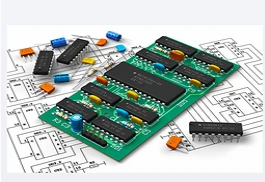For high-speed PCB design, there will be impedance control requirements for transmission lines, such as single-ended 50 ohms (±10%), differential 100Ω (±10%), etc., and high impedance control requirements will also require ±5% accuracy, Because experts have said that if the impedance is not matched or the impedance is discontinuous, it will cause signal reflection and signal integrity problems.
Since impedance mismatch or impedance discontinuity will cause signal integrity problems, do we only need to calculate the PCB stack that can accurately match the target characteristic impedance and the corresponding line width and line spacing before doing PCB Layout, and strictly follow this Layout high-speed signal lines with the line width and line distance, and then submit the PCB manufacturing file to the board factory, the PCB board factory can produce a PCB that fully matches the characteristic impedance control requirements?
You carefully calculated the corresponding line width, line spacing and laminated structure according to the target characteristic impedance requirements, and wired the wiring in strict accordance with the line width requirements, and sent the board-making requirements and the board-making documents to the board factory, but there is still a gap. Adjustment……

Because your laminated structure and the required impedance line width and line spacing have reached the board factory, the board factory also needs to recalculate and compensate and adjust according to its own material and process conditions, even if it is a PCB that has been ranged and verified., If you change to a new board factory, you may also face the need to adjust the line width, line spacing and laminated structure.
There are mainly the following factors that cause the impedance difference:
1. Difference in characteristic impedance calculation
Your impedance calculation software should be consistent with the impedance calculation software of the board manufacturer. This avoids the deviation of the results caused by different calculation software. Now most board manufacturers in China use polar. You can jump to the past and install polar. si9000 to calculate impedance.
Secondly, all your calculation parameters are calculated based on ideal values, without considering the residual copper rate (this will affect the thickness of the dielectric layer after lamination), the dielectric constant deviation of different batches of plates, and the PCB lamination process Deviations and other factors that affect the final characteristic impedance.
2. Coplanar waveguide characteristic impedance-Polar 9000
Even if you can calculate the characteristic impedance through software to fully comply with the line width of 50Ω and lay out the line width strictly according to the line width value, but at the board factory, due to the influence of process and plate differences, the final characteristic impedance reaches an accuracy of ±5%. It's relatively high. Due to different processes, different board manufacturers adjust and compensate the characteristic impedance of the PCB differently. Even if the same PCB has been confirmed for mass production, after changing to a different board manufacturer, the board manufacturer will still affect the PCB line width or medium. The layer thickness is fine-tuned.
Generally, the board factory will accurately calculate and fine-tune the theoretical impedance value according to the personalized design of the PCB, the influence of the parameters in the actual production and the rich design experience, to ensure that the impedance control requirements of the PCB are met. The theoretical calculation value of the impedance of the board factory is smaller than the value we require to control. For example, we require a single-ended control of 50Ω. He calculates the line width requirement according to 48Ω, and then compensates and controls it during production. The final product impedance value can be meet our requirement.
Accurate control of impedance is not a matter of our layout, but a matter of the board manufacturer. As long as the board manufacturer can ensure that the PCB produced can meet the impedance characteristics requirements, it is OK. In order to reduce production costs, if the signal requires an impedance deviation of ±10%, then we do not need to require the board factory to produce at ±5%, resulting in unnecessary cost increase.
Why do most datasheets require a control of ±10%? That is based on the current process capability and cost of the board manufacturer, combined with the integrated value of the IC's tolerance to impedance characteristic deviation, perhaps as the PCB manufacturing process improves As the communication rate increases, it is not a problem for the control deviation of the characteristic impedance to be ±3% or ±1% in the future.
Layout only needs to communicate with the board manufacturer, tell the board manufacturer the corresponding laminated structure, the required board, and the characteristic impedance that needs to be controlled, and then layout according to the recommended line width and spacing given by the board manufacturer.
When doing PCB layout, the impedance calculation software is used to perform preliminary calculation of theoretical values to roughly determine whether the impedance requirements are met and leave some room for fine-tuning for the PCB board factory. The remaining impedance control matters are solved by the board factory.